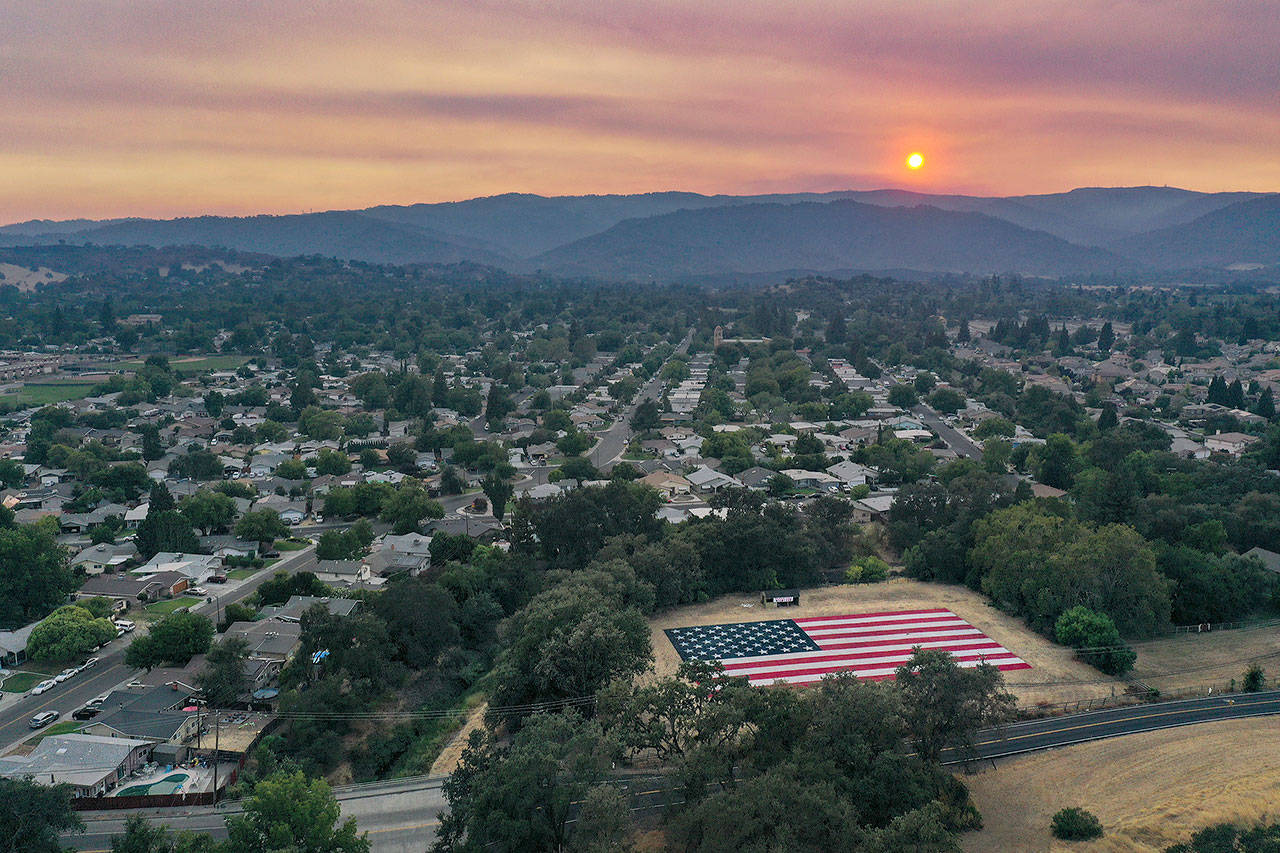LOS ANGELES — Favorable weather conditions gave crews on the front lines of the historic firestorm in Northern California a boost, as officials reported scant overnight growth on two of the largest blazes the state has seen.
Although the progress is encouraging, the widespread wildfires continue to take a dramatic toll, and not just in terms of acres burned.
The fatalities among the fires stands at seven, including five who perished as a result of the LNU Lightning Complex fire —three in Napa County and two in Solano County —and one in the CZU Lightning Complex fire burning in San Mateo and Santa Cruz counties. A pilot also died in a helicopter crash in Fresno County while on a water-dropping mission for the Hills fire.
Seven people also have been reported missing in the area of the CZU Lightning Complex, according to Santa Cruz County Sheriff’s Chief Deputy Chris Clark.
“Those are areas that we want to get to, but due to fire activity and other hazardous conditions that exist out there from falling trees and impassable roads, it makes it tough,” he said during a news briefing Tuesday morning. “That’s an absolute priority. As soon as we can get in there to do further investigation, we will.”
Although not as large as some of the other blazes burning in the northern part of the state, the CZU Lightning Complex fire has been destructive. Officials said Tuesday that the fire had destroyed 246 homes, seven commercial buildings and 77 other structures. About 77,000 people have been evacuated.
Officials noted, however, that they had made great strides. Containment of the 78,869-acre blaze is now at 17%.
“The past couple of days, we’ve seen significant progress in our firefight on this incident,” Mark Brunton, operations chief for the California Department of Forestry and Fire Protection, or Cal Fire, said Tuesday. “The weather has really cooperated with us. We’re steadily getting a trickle of resources in. As soon as we’re getting those resources, we’re putting them to work.”
Forecasters had expressed concern Sunday about a weather system, which was off Central California and moving toward the Monterey area, that had the potential to generate thunderstorms. Bay Area forecasters said Monday, though, that most of the moisture had moved north, spurring the early cancellation of a red-flag warning there as well as along the northern Central Coast.
Red-flag warnings —which indicate that dangerous fire weather conditions are expected —had been lifted for all but the northeastern corner of the state as of Tuesday morning.
The city of Santa Cruz and the campus of the University of California, Santa Cruz are also “looking very well-protected,” Brunton added, “and with our expected weather, we’re not very concerned with any further push there.”
Authorities ordered the campus to evacuate last week as the fire danger grew.
“There is no fire activity on campus or in the city of Santa Cruz, and we hope that all the campus actions have been taken in an abundance of caution,” university officials wrote in an update Tuesday morning.
Ian Larkin, unit chief for Cal Fire’s San Mateo Santa Cruz Unit, called the fire a “historic event.”
“We have never seen fire like this in the recent history that we have any records for,” he said Tuesday. “This fuel is very receptive due to drought conditions, so any changes in the weather, though we have good predicted weather for the future, could change that environment.”
Crews also reported progress in containment of the LNU Lightning Complex fire, which at roughly 353,000 acres is the third-largest blaze in California history. Officials reported that only about 1,100 additional acres had burned from Monday night to Tuesday morning, and the fire is now 27% contained.
The blaze, burning in Napa, Sonoma, Lake, Solano, Yolo and Colusa counties, had destroyed 937 homes and other buildings as of Tuesday morning.
Firefighters also saw relatively modest growth overnight of the SCU Lightning Complex fire, with about 3,700 additional acres burned. At 363,772 acres, it is now California’s second-largest blaze in history.
“We are essentially living in a mega-fire era,” Jake Hess, a Cal Fire unit chief, said at a news conference Monday. “We have folks who have been working for Cal Fire for the last five years, and that is all they understand, mega fires, since they started.”
The SCU Lightning Complex, which spans seven counties, began as a collection of about 20 blazes in areas of Contra Costa, Alameda, Santa Clara, Stanislaus and San Joaquin counties and by Sunday had merged into two conflagrations.
The fires were 15% contained as of Tuesday morning. Eighteen structures have been destroyed.
More than 1,200 homes, commercial buildings and other structures have been destroyed by fires in California since late July, with nearly all of that after Aug. 15, which marked the start of what officials called a “lightning siege.”
As of Monday, crews were battling 625 fires statewide, according to Gov. Gavin Newsom.
So far this year, firefighters have responded to 7,002 fires that have scorched a combined 1.4 million acres, he said. That’s more than the land area of the state of Delaware.
By comparison, at this time last year there had been 4,292 fires that had consumed about 56,000 acres.
Newsom called this week critical “as it relates to addressing and suppressing these wildfires” and said the state was “deploying every resource at our disposal.”


